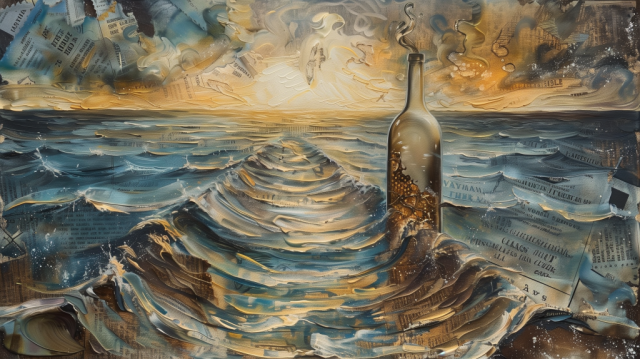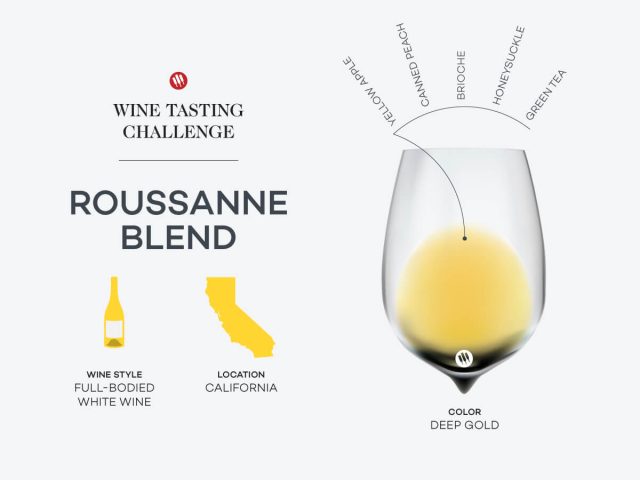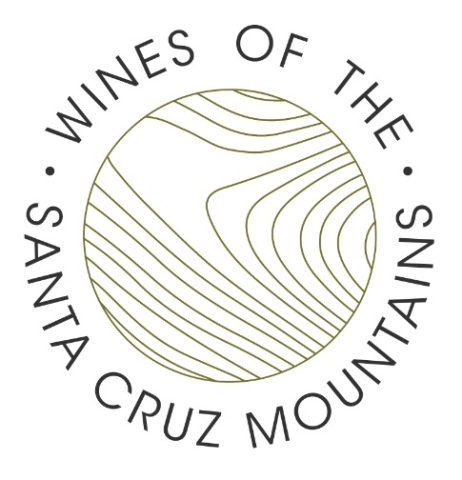The Art of Austrian Wine: From Auslese to Zweigelt

By Alana Lapierre
If a question on the American game show Jeopardy! showcased the varietes Gruner Veltliner and Blaufrankisch, a contestant would surely respond promptly with, “What are two of Austria’s most well-known varieties?”
© Austrian Wine / WSNA Austrian Wine Marketing Board
They’d be correct of course, but that answer would also belie the great depth and variety of Austria’s terroir, one that I had the pleasure of tasting through following Austrian Wine’s June 2021 Ontario online tasting event that included wine samples, public seminars, and private video meetings with winemakers.
Austria is known mostly for fresh, pure white wines and exceptional value for money in terms of price points. 40 grape varieties (26 white and 14 red) are approved to produce Qualitätswein (quality wine), Prädikatswein (Qualitätswein with a special level of ripeness and/or method of production) and Landwein in Austria’s 46,000 hectares of vineyards.
While international varieties such as Riesling, Pinot Blanc (Weissburgunder), Sauvignon Blanc, Chardonnay, Muscat Blanc à Petits Grains (Gelber Muskateller), Pinot Noir, Merlot, Cabernet and Syrah will likely ring a bell to most wine aficionados, Austria is also increasingly known for both lesser-known international varieties such as Muskateller and Traminer, and for its portfolio of local grape varieties.
In addition to the ubiquitous Grüner Veltliner and Blaufränkisch, some lesser-known whites include Welschriesling, Rotgipfler, Neuburger, Roter Veltliner and Zierfandler. On the red side you’ll find St. Laurent, also known as Sankt Laurent, Blauer Wildbacher, Blauer Portugieser, Blauburger and Zweigelt, not to mention field blends such as the Viennese Wiener Gemischter Satz.
Thirsty for more? Austria is increasingly recognized as a producer of sparkling wines, and in 2016 devised a three-tiered classification for its PDO designation of Osterreichischer Sekt g.U.: Klassik, Reserve and Grand Reserve.

© Austrian Wine, Photo by: Peter Oberleithner
Austria’s wide individuality of wines has many factors to thank, ranging from its diversity of climate, land and soils, and increasing interest from winemakers in higher altitude vineyards, resistant grape varieties and green farming practices.
While it’s still considered a cool climate region, global warming is showing here to with a +2 °C average temperature increase since 1980, resulting in hotter summers and drier winters. On the green initiatives front, 27% of Austrian agriculture is organic, 14.7% is certified sustainable and the balance is mostly minimum Intervention with low yields at 75 hectoliters per hectare.

© Austrian Wine, Austrian Wine Marketing Board
Photo By: Gerhard Elze
Located at the same latitude as Burgundy, but more centrally located within Europe, Austria’s cool climate sitting at the junction of the mild and damp influences from the Atlantic and the warmer, drier ones from the Mediterranean is often rightfully credited as a key player in developing the exceptional quality of its fresh, aromatic wines that consistently show premium character and body.
An Old World wine region with serious wine cred: the Romans started making wine there over 3,000 years ago. Austria is “small” compared to many of its neighbors, seventeenth in world production, but its quality reputation is growing quickly as more and more consumers discover everything this country has to offer.

© Austrian Wine, Austrian Wine Marketing Board
Photo by: Robert Herbst
As varied as Austria’s climate is, the landscape and soils of each region range from stone terraces and loess (silt, clay, and calcium carbonate) layers to calcareous and volcanic soils bringing the freshness, acidity, ripeness, and spice that are so often associated with both its whites and reds. Recognizable with both their distinctive bottle tops (Qualitätswein’s are permitted to put Austria’s red and white flag on them) and names.
New York Times critic Eric Asimov was eloquently quoted as describing the ‘umlaut’ or double dots seen frequently above vowels in both Austrian wine varieties and regions, such as Grüner Veltliner, Blaufränkisch and Niederösterreich, in the following way:
‘But nothing scares wine consumers so much as an umlaut. This diacritical mark, a mere two dots, is simply intended to communicate a particular pronunciation of the vowel it tops. Instead, it often signals to consumers that they must flee in terror to the nearest bottle of pinot grigio. Yet if they can surmount the obstacle of the umlaut, I believe they will find a lot to like in a glass of good blaufränkisch.’
(‘Wines of the Times – A Complex Red With an Austrian Accent” The New York Times – Sept. 13, 2011)
A diversity of regions
To say that Austrian wines are having a moment would be an understatement. Now known for having successfully pivoted away from mass-produced and marketed wines and for creativity, innovation, and fresh wines.
White and red, show terroir and regional typicity as well as for its ‘virage’ towards greener, organic, sustainable, and biodynamic farming practices. Rudolf Steiner, the father of biodynamics was Austrian.

© Austrian Wine, Austrian Wine Marketing Board
Photo By: Armin Faber
Austria’s wine classification system
- Wein – i.e. from the general production area of Austria. Landwein – a PGI wine, or Protected Geographic Indication from a defined production area such as Weinland, Steirerland or Bergland.
- Qualitätswein – a PDO wine, or Protected Designation of Origin, for regionally typical wine with DAC, or Districtus Austriae Controllatus, being Qualitätswein from specific regions that focus on the most representative grape varieties & styles, and distinctive flavor profiles.
- These are estate bottlings with the Austrian flag quality seal on the capsules and a registered producer number, from either generic or specified regions as outlined below and include criteria such as grapes harvested from a single region, from approved grape varieties, respecting minimum alcohol and acidity levels, maximum yield levels and that are free of defects in appearance, smell, and flavor.

© Austrian Wine, WSNA, Austrian Wine Marketing Board
Niederösterreich – The largest of Austria’s wine-growing regions at over 28,000 hectares sits along the Danube River and includes the regions of Wachau, Kremstal DAC, Kamptal DAC, Traisental DAC, Wagram, Weinviertel DAC, Carnuntum, and Thermenregion, Niederösterreich produces a wide range of wines (whites, reds, effervescent, sparkling or Sekt, and sweet) from a large array of both international and local varieties.
Lower Austria – Here you’ll find the country’s most popular wine varieties, Grüner Veltliner and Riesling These regions consistently overdeliver, producing highly rated premium wines. ‘Ried’ on the label before the name of the vineyard on a Qualitätswein or DAC wine means it was made from a single vineyard site.

© Austrian Wine, Austrian Wine Marketing Board
Photo By: Peter Kramar
Burgenland – Second in size at over 13,000 hectares and known for innovative and creative wines, from premium whites and reds to noble sweet wines, Burgenland includes four specific wine-growing regions: Neusiedlersee DAC, Leithaberg DAC, Rosalia DAC, Mittelburgenland DAC and Eisenberg DAC.
Steiermark and Styria – A region of rolling hills called the Tuscany of Austria, consisting of three specific wine areas, Vulkenland Steiermark DAC, Südsteiermark DAC and Schilcherland DAC, and covering more than 4,500 hectares, this region is increasingly producing ‘character’ wines with styles distinctive to their region, including what some consider among the best Sauvignon Blanc in the world.

© Austrian Wine, Photo by: Anna Stöcher
Wien/Vienna – Small but mighty at 650 hectares within the city limits of Austria’s capital city Vienna – making it one of the world’s most vast wine producing cities, the region of Wien encompasses Wiener Gemischter Satz DAC and is known mostly for its white wines though produces some premium reds as well.
Bergland/Other – Wines that meet the Qualitätswein requirements from small wine-growing regions not included in the above can label their wines with the name of their state such as Kärnten, Oberösterreich, Salzburg, Tirol, and Vorarlberg.
Going beyond Grüner Veltliner and Blaufränkisch
Blaufränkisch means ‘Blue Frankish’ and dates from the Middle-Ages where it was considered a noble grape by the monarchy. Its popularity can’t be denied with its spicy raciness and fresh tartness lending it to both easily quaffable reds as well as bolder food friendly wines, it’s no wonder it’s sometimes compared to Pinot Noir.

© Austrian Wine / WSNA
Austrian Wine Marketing Board
A rather unfair comparison when one considers its unique history and character. With a black fruit forward nose, peppery spice and on the palate and distinct zippy acidity, structure, and tannins it deserves the hype it’s increasingly getting. Fun fact: Blaufränkisch is related to Gamay.
Grüner Veltliner – or ‘green veltliner – is often considered Austria’s flagship variety and is well-known for a reason being it’s most planted grape representing 33.2% of planted grapes and covering more than 14,000 hectares. But don’t let its fame lead you into thinking it’s superficial: Grüner Veltliner wines are versatile and can go from light, citrus-forward wines to zesty, peppery, full-bodied gems.
Want to explore off the beaten paths of these two varieties?

Whites to explore
When a grape like Grüner Veltliner has a cool nickname, in this case ‘GrüVe’, you know it has a loyal fan following. To venture off its well-known path, try:
- Welschriesling, unrelated to Riesling and originating from Northern Italy, with its fresh, higher acidity whites showing aromas of citrus, green apples and hay in dry white wines (and with great ageing potential when aged on fine lees) but also used to make premium sweet wines.
- Roter Veltliner, an autochthonous parent variety of the Veltliner family that, when yields are limited, can produce rich, elegant, fine wines with serious ageing potential.

© Austrian Wine, Austrian Wine Marketing Board
Photo By: Peter Oberleithner
- Zierfandler, a wine curiosity grown almost exclusively in Thermenregion that gives lush, ripe whites balanced with fresh acidity and a mineral character.
Reds and blends
- Blauburger, a crossing of Blauer Portugieser and Blaufränkisch that produces deep, dark, velvety reds with soft berry flavours.
- St. Laurent (thought to have evolved from a Burgundy seedling and with a name referring to the Feast of St. Lawrence on August 10th when the grapes begin to colour) and its fruit forward (berries, cherries and black fruit) soft, velvety wines that can show Pinot qualities with ageing.

© Austrian Wine, Austrian Wine Marketing Board
Photo By: Armin Faber
- Zweigelt, a crossing between Blaufränkisch and St. Laurent, that can give both fresh and light early-drinking wines or powerful deep reds when aged in barriques, usually with lovely berry notes and a light spiciness.
- Wiener Gemischter Satz, a Viennese wine specialty made from a variety of grapes (up to 20 different ones) planted in the same vineyard then harvested, pressed and co-fermented together. Historically a jug wine served in Austrian taverns, it’s gaining in popularity right now and increasingly quality wines are being made from premium field blends (in 2013 it became Austria’s ninth DAC).

© Austrian Wine WSNA Photo by: Austrian Wine Marketing Board
A focus on sustainability and growth
Boasting 27% of organic vineyards, one fifth farmed biodynamically, 14.7% of vineyards certified sustainable and hand harvest still dominant, Austria continues to lead the way in sustainable and green farming practices and certifications.
The ‘Sustainable Austria’ certification program regulates the use of the term sustainability and wines made organically or biodynamically can be identified by the green EU organic logo with the code number of the certification body.
To say that Austrian wines are growing in popularity would be an understatement, with exports booming up from €50 million (roughly CA$72 million) and 50 million liters in 2001 to €187.3 million (or CA$270 million) and 67.6 million liters in 2020.

© Austrian Wine, Austrian Wine Marketing Board
Image By: Peter Kramar
The larger increase in value versus volume is explained largely by the large increase in Austrian wine exports of bottles versus bulk wine.
Its largest export markets are Germany and Switzerland; the USA and Canada standing at 4th and 8th rank respectively, with Canada having gained in rank by 4 since 2019.
Curious to learn more?
Austrianvineyards.com is the world’s first digital wine atlas and covers Austria’s entire wine producing regions with detailed digital interactive maps, topographic information, vineyard mapping and a wealth of other information from regional designations and climate to information on specific vineyards.
Austrianwine.com is a wealth of information on all things Austrian wine.
Tasting Notes
Below are some qualitative and/or interesting highlights and reviews from the 36 wines that I tasted (a selection of 26 whites, 6 reds, 1 rosé, 1 orange and 2 Sparkling) graciously provided to me by the Austrian Consulate General and by United Stars Corporation Group.

White Wines
Weingut Schauer Sauvignon Blanc Schiefergesteing Kitzeck-Sausal Südsteiermark 2016 – Golden yellow in colour with notes of stone fruit and herbs on the nose and the palate adding some smokiness and a mineral underlay it has a firm structure and long, fine finish. Complex as it evolves, original and absolutely stunning, paired beautifully with a cheese and charcuterie board. 93 Points
Weingut Weinrieder Reserve Grüner Veltliner 2016 – Golden yellow in colour, complex and layered this is a wine to savor slowly. Citrus, apple, hay and grass on the nose, the palate follows with a smoky earthiness and creamy notes. A balance of lush and bright acidity it has a long finish with a nice, light zip of green pepper at the end. Enjoyed it on its own but would be lovely with simple poached fish in cream sauce. Available at the LCBO for $54.85 (#932268). 93 Points
Weingut Steindorfer Gelber Muskateller Burgenland 2017 – Documented in Austria since 1400, Muskateller (or Muscat Blanc à Petits Grains) plantings are increasing in popularity and are frequently made into premium sweet wines. Here though is a beautiful example of an aromatic, dry, intense, fruity (quince, lychee, elderberry), complex white with a long, lingering finish. Offset a rich, creamy sheep cheese (Brebirousse d’Argental) perfectly. 92 Points
Weingut Stadlmann Igeln Zierfandler Ried 2016 – A lush, honeyed gold colour, this single-variety Zierfandler (a little-planted and little-known variety found in Lower Austria’s Thermenregion) is ripe, lush, intense, and distinctive. Surprising and delightful with fruit, earth and smoke notes of just-ripe ground cherries, spice, and honey!

© Austrian Wine, Austrian Wine Marketing Board
Blickwerk Fotografie
Well balanced with a touch of creaminess and a long finish it evolves beautifully as it warms and was delightful with a seafood apéritivo platter of salmon rillettes, grilled lobster pieces and Matane shrimp. A varietal that was new to me and one that I will be searching out in the future. 91 Points
Weingut Weinrieder Birthal Weissburgunder 2017 – Bright yellow in colour, and fruit-forward (lemon, green apple, and peach) on both the nose and palate with slight hints of nuts, this Pinot Blanc has a creamy sweetness to it that is balanced beautifully by its crisp acidity, a full body and long, lingering finish. Paired beautifully with grilled shellfish in a creamy lemon sauce. Available at the LCBO for $25.85 (#932250). 91 Points
Herrenhof Lamprecht Furmint 2018 – this may be the best Furmint that I have tasted! Bone dry, fruit (lemon and pear) forward on the nose and with a slight saltiness, it’s bright, fresh, and crunchy! Complex and could go head-to-head with a premier cru Chablis without shame.
Medium plus body with layers of earthiness (thank you sandstone soils?) and cream (biodynamic, hand harvested, barrel fermented in barrels made of 50% estate forest wood, lees contact until bottling and low intervention). Unlike any other Furmint that I have tried and paired beautifully with a rich charcuterie platter (mortadella, guanciale, Thüringer). 91 Points

© Austrian Wine, Austrian Wine Marketing Board
Blickwerk Fotografie
Red Wine
Weingut Franz Schindler Cuvée d’Or Burgenland 2015 – Schindler’s premium wine, this Cuvée d’Or is a deep, nuanced, bold red with earthy mouthfeel that beautifully defied the common ‘all Austrian reds are light’ misconception. 60% Blaufränkisch, 20% Cabernet Sauvignon and 20% Merlot.
It’s fruit forward on the nose with blackberries, raspberries and a touch of smoke, and a palate that follows through with dark cocoa, leather, slight toast from the oak barriques and plums. With present but smooth tannins and a lingering finish it was perfect with a Tomahawk steak and vegetables, simply grilled with olive oil, salt and pepper. Definite potential for ageing but drinks beautifully now. 91 Points

© Austrian Wine, Austrian Wine Marketing Board
Blickwerk Fotografie
Rosé Wine
Zweigelt Rose ‘Rosa Marie’ Martin & Anna Arndorfer 2019 – this skin contact rosé wine (a blend of Zweigelt grapes and Grüner Veltliner skins) is a fresh, tart red fruit party of strawberries and raspberries dancing with a bit of pepper. Lovely and bright – the perfect glass for a beautiful autumn afternoon! The winemaker’s ethos is, in their words, to ‘produce wine for pleasure and with pleasure’ and they’ve succeeded with this delightful rosé! Happiness in a glass. 88 Points
Orange Wine
Weinhof Uibel Una Frühroter Veltliner 2017 – A light orange citrus bomb (think orange zest and apricot marmalade) not for the faint of heart this dry wine wowed with zingy acidity, tart freshness, slight creaminess, and aromatics of wet earth, fallen leaves and moss. Hard to describe with the nose and palate unfolding with time and from young Austrian winegrower Leo Uibel it was sheer perfection with simple steamed mussels and sea salt roasted fries. 89 Points

© Austrian Wine, Austrian Wine Marketing Board
Peter Oberleithner
Sparkling Wine
Schlumberger Sekt Reserve Chardonnay Brut Austrian Sparkling – With fine bubbles, notes of apple, lemon, yeast, and pear on both the nose and palate, it has a nice creaminess that is balanced with crisp acidity. Medium-bodied and with good length it’s a perfect festive aperitif wine. Paired perfectly with Friday cocktail hour. 88 Points
Credits & Sources
Alana Lapierre
Passionate about all things wine, trained in Organizational Psychology (Ba., M.Ed.), Wine & Spirits Education Trust certified (WSET Levels 2 & 3) and completing certifications in Champagne (Comité Interprofessionnel du vin de Champagne) and Food & Wine writing (Le Cordon Bleu). She has lived, worked, tasted and written (as both an author and ghostwriter) at home (Montréal & Toronto, Canada) and abroad (NYC, Paris, Dubaï, Qatar and Algeria).









